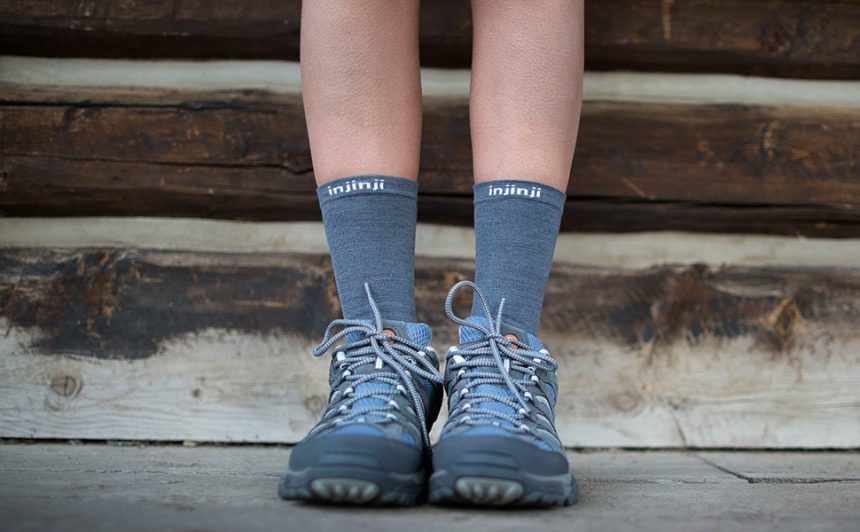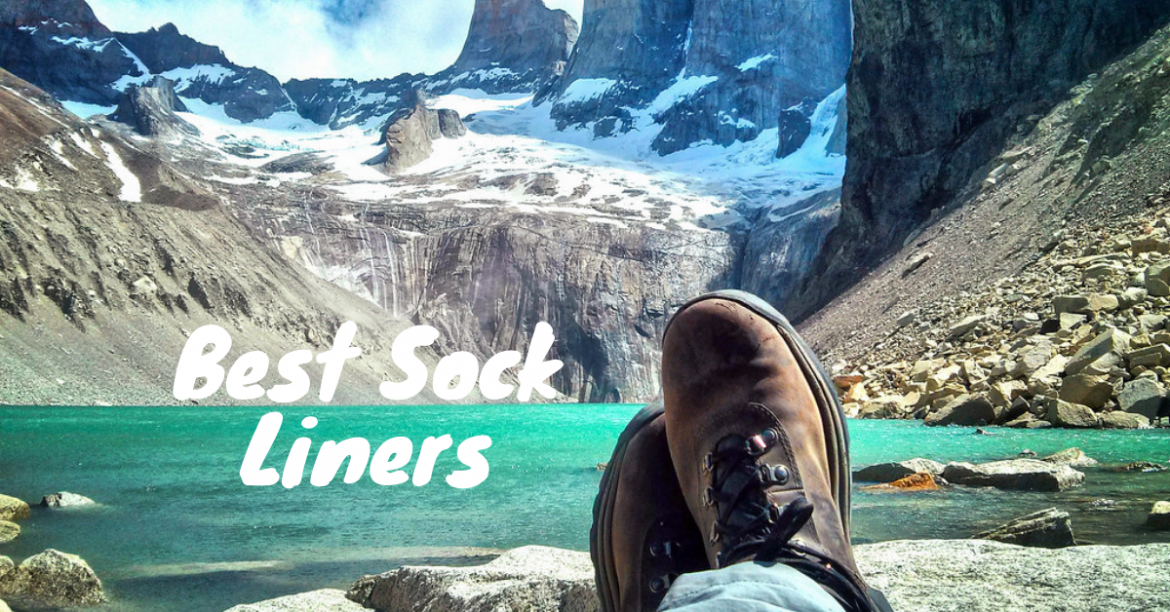Why are sock liners important?
Sock liners help prevent blisters by reducing friction and wicking away moisture from your skin.
Reduce Friction: Hiking shoes and boots will inevitably rub your feet and create friction. Your shoes frequently compact your toes creating hot spots that, over time, can turn into blisters. Stiff boots are usually the most problematic since their toe box area is often very stiff and narrow.
Wick Away Moisture: Thick socks inside thick shoes can often create hot and steamy feet; with little opportunity for your feet to breathe. This is particularly the case on a strenuous day of hiking or during a warm-weather activity. Ultimately, wet skin is softer and more vulnerable to abrasion, which will cause blisters to form.
Picking a sock liner is a lot like picking a sock, with the additional need to focus on comfort. We’ve taken time to review all of the options available and drew on some of our own preferences based on our use of socks and sock liners in extreme weather. To complement your toughest sock liner, you might also want to check out our toughest socks recommendations.
Best Overall Sock Liner
Overall, we recommend the Injinji crew sock liner. This liner is designed for long treks and aggressive day hikes. Injinji’s patented five-toe design conforms to your foot for a streamlined fit that sits comfortably under an outer sock. This liner also functions well as a soft, superlight sock for summer adventures. If temperature or padding is an issue, you can easily throw on some merino wool socks over these liners.

Injinji Liner Crew NuWool socks are unisex and come in a few different colors. Reviews of this sock are extremely high and call attention to the liners ability to reduce odor while completely eliminating blisters during marathons or long hikes. We also recommend using HikeGoo with these liners if you’re looking for another way to combat blisters.
- Anatomical 5 toe design
- Superior fiber construction
- Arch Support
- Mesh Top design for ventilation
- Injinji Liner Crew NuWool socks are a great standalone sock for any summertime adventure, backpacking trip, or day hike. They are also a great base layer sock to pair with another sock when layers are needed for extra warmth or protection.
Toughest Sock Liner
There are some pretty serious liners when you’re looking or something that will withstand the elements and last for a long time. Keep in mind that sock liners are typically thin and are designed to be worn under socks. Having said that, we’re smitten with the Kenetrek over-the-calf sock liner since it’s a bit thicker and is often worn by hunters, ice fishermen and extreme weather outdoorsmen (and women) in the coldest parts of North America. This liner will hold up to the toughest of conditions all the while supressing odor and minimizing or eliminating blisters.
Best Value Sock Liner
perfect for members of our herd who prefer a snug-fitting hiking shoe, or for those who prioritize ventilation above all else. These lightweight merino socks boast an ultra-thin platform for minimalist hikers who seek simplicity. If this option doesn’t check all the boxes for you, we recommend perusing Walmart’s sock liners to see if any of their lower-cost options appeal to you.
- Made for the Great Outdoors: Made with non-itch, high-performance Merino wool and recycled nylon, these crew socks set the standard for hiking socks, elevating your performance and adding comfort to all your outdoor activities
- Lightweight hiking socks suited for warm-weather outings
- Crew height accommodates hiking boots and enhances skin coverage
- A touch of elastane offers stretch for a motion-friendly fit and feel
- Partially recycled fabric blend helps limit environmental impact
- Merino and synthetic fabric wicks moisture and fights odor
- Breathable, lightweight design is also great for casual applications
Best Liners for Boots
Since sock liners are often used to increase warmth or reduce blisters, we wanted to make sure we provided a recommendation for boots. These liners come in a two-pack and are an excellent value for the price.

They are also thin and breathable, yet sturdy enough based on their extra padding in the toe and heel. These liners are 57% COOLMAX, 20% Nylon, 19% Endurofil, 4% Lycra. This is a boot height sock with no cushioning for a slim fit. Minimal cushioning and ideal for wearing next to the skin to form a secondary layer of protection. Designed to be worn for comfort, additional warmth and practicality, these liners will help to keep you comfortable for as long as possible whatever the terrain is like. Perfect for protecting your feet during treks and hikes or even to wear every day on their own.
- Endurofil™ polypropylene combines with nylon and merino wool for high abrasion and wash resistance in addition to superb wicking and durability.
- COOLMAX fibers add moisture-wicking performance.
- Lycra® fibers knit in specific zones improve the fit and long-term comfort and also help sock keep their shape year after year.
- 4-channel construction draws moisture away from the skin and transports it to the outer surface for maximum dryness and comfort all day.
- Noncushioned.
- Flat toe seams reduce bulk and prevent irritation.
- Sold as 2 pairs.
How necessary are sock liners, really?
If you are going for a short day hike with well-fitted, comfortable shoes and a pair of quality hiking socks, then you probably do not need any liners. However, if you’re hunting, running a marathon, ice fishing, working outdoors for long periods of time in extreme weather–you should consider using a sock liner.
Sock Liner Considerations
Material: Silk, nylon, polyester, wool are the most common. Ultimately, just no cotton.
Thickness: Unless you are hiking in sub-freezing temperatures, keep them thin. Too thick and they will completely alter your shoe sizing.
Length: Low-cut, under the calf sock liners are light and compact, but difficult to adjust once your outer socks have been put on and you’ve tied your shoes or boots.
Attribution for post hero photo: https://flickr.com/photos/douglucas/15753367794/




